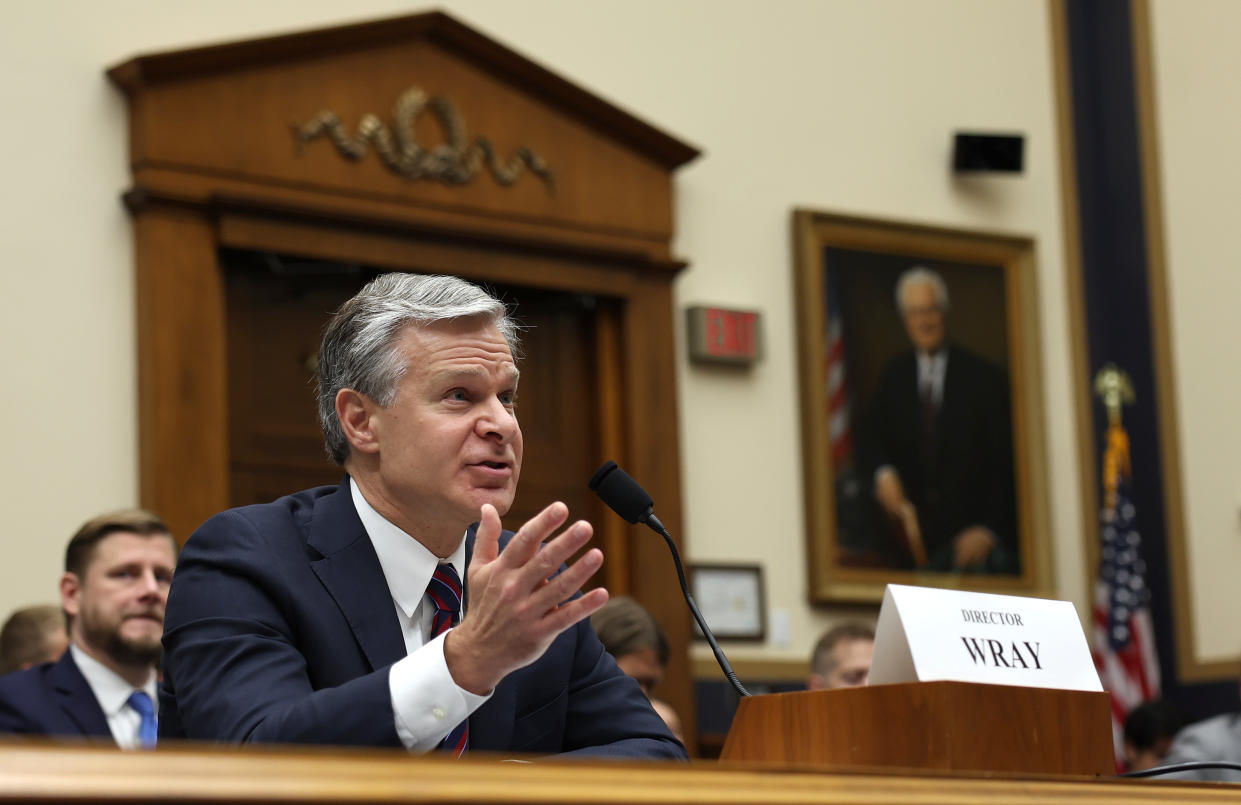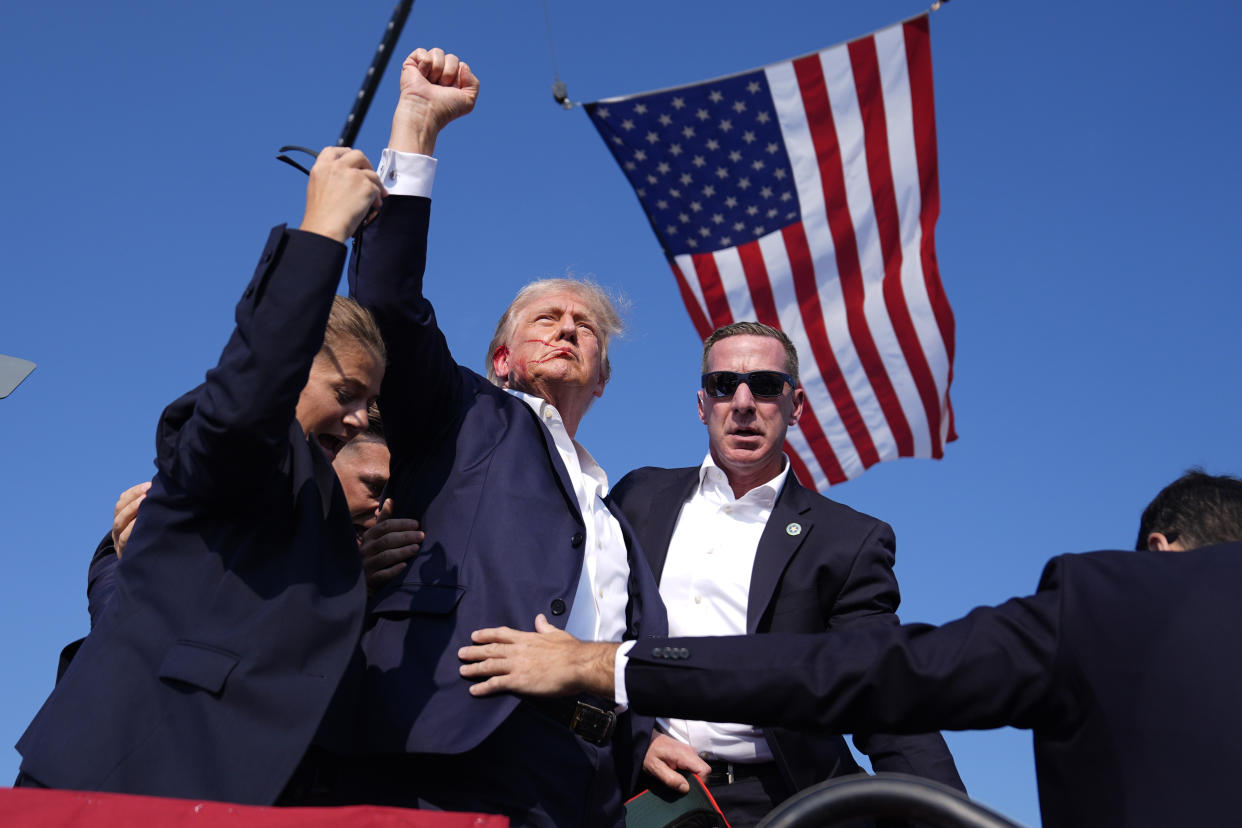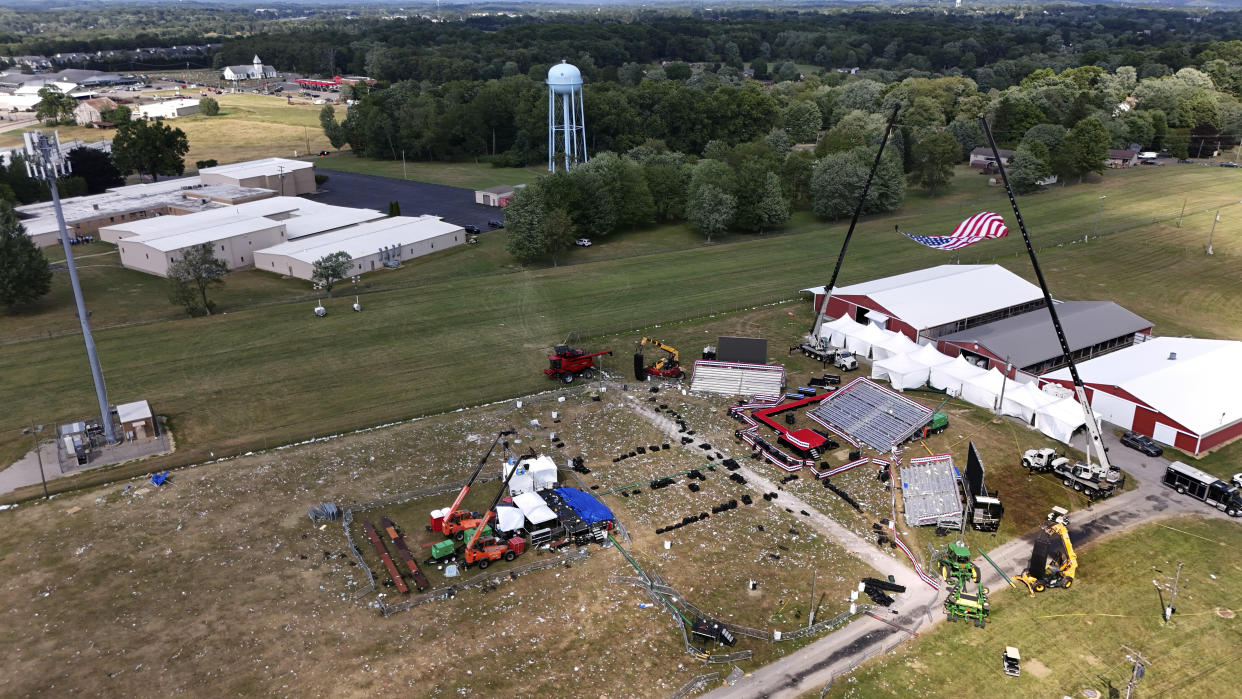Trump shooter researched JFK assassination, FBI director says. What we've learned — and still don't know — about the attack.

FBI Director Christopher Wray told lawmakers on Wednesday that the gunman who opened fire at former President Donald Trump’s campaign rally looked up “how far away” John F. Kennedy’s assassin was located on the day the then president was fatally shot in 1963.
Wray testified before the House Judiciary Committee about the FBI’s investigation into the attempted assassination against Trump on July 13. He called the shooting “an attack on our democracy and our democratic process, and we will not and do not tolerate political violence of any kind.”
“We're going to leave no stone unturned. The shooter may be deceased, but the FBI's investigation is very much ongoing,” Wray said, adding that the bureau is using all of its criminal and national security resources in the investigation.
Wray’s testimony revealed new details about the gunman, identified by authorities as 20-year-old Thomas Crooks, who killed one person and wounded two others. Trump was also wounded.
💬 What we learned from the FBI director’s July 24 testimony
Gunman searched JFK assassination: Investigators found that on July 6, Crooks searched “how far away was Oswald from Kennedy” on Google. The search was referring to Lee Harvey Oswald, who assassinated Kennedy from the sixth floor of a building in Dallas on Nov. 22, 1963. “That search is obviously significant in terms of his state of mind. That is the same day that it appears that he registered for the Butler rally,” Wray said.
The “collapsible stock”: When asked how the gunman was able to get a weapon to the nearby roof where he opened fire from, Wray said he didn’t yet have an answer to that specific question. He testified that the gunman’s weapon “had a collapsible stock, which could explain why it might have been less easy for people to observe.”
How the gunman got on the roof: Wray said investigators believe Crooks was able to get onto the roof by climbing up “using some mechanical equipment on the ground and vertical piping on the side of the” building. “In other words, we do not believe he used a ladder to get up there.”
Bullets on the roof: Wray said investigators “have recovered eight cartridges on the roof.”

Accomplices?: Wray was asked if there were any known co-conspirators, accomplices or cooperators who also took part in the rally shooting. “Not at this time,” Wray said. “But again the investigation is ongoing.”
The drone: Wray confirmed that Crooks flew a drone on July 13 over an area “about 200 yards, give or take,” from the rally hours before the shooting. He added that there was no recording of the roughly 11-minute drone flight, but believed the gunman was watching video streamed from the device to scout the area.
Crooks’s phone: Wray said gaining access to Crooks’s phone was a “significant technical challenge” and that the gunman used encrypted messaging apps on his phone.
Explosive devices: Wray said that two explosive devices were found in the gunman’s car and one was found at his residence, classifying them as “relatively crude,” though they did have the capability of being “detonated remotely.” A transmitter was found on Crooks after he was killed. "At a moment, it looks like because of the on/off position on the receivers, that if he had tried to detonate those devices from the roof, it would not have worked, but that doesn't mean the explosives weren't dangerous," Wray said.
Images of political figures found on gunman’s devices: Wray testified that the images of various political leaders found on the gunman’s devices were “cached images from searches of news articles.” Wray explained that if someone reads a digital news article, the photos on said article will automatically get stored in the cache, as opposed to images specifically searched. This suggests the shooter was reading news articles on these political figures.

❓ What we don’t know
The gunman’s motive: “Many of us are interested in the motive of the shooter here; when it’s an assault on a political figure, you immediately assume there’s a political motive, and that may be the case here. We don’t know yet,” said Rep. Zoe Lofgren, a California Democrat. “Can you enlighten us about that?” Wray replied, “I think it’s fair to say that we do not yet have a clear picture of his motive.” Typically there are motive answers through social media searches, messages or a manifesto, he explained. But Wray added: “We're not seeing that, but we're digging in hard because this is one of the central questions for us.”
How the gunman was able to fire eight shots: Wray was asked how the gunman was allowed to get eight shots out before he was neutralized by the Secret Service counter-sniper. “That I think is something we’re still digging into,” Wray replied.
Why Trump was allowed to go onstage: The Secret Service knew that local law enforcement was looking for a suspicious person before Trump took the stage, one lawmaker said. Wray was asked why Trump was allowed to go onstage. “We don’t know the answer to that,” he said, adding that the FBI’s investigation is focused on the shooter, but acknowledged the intense interest in that key question.


